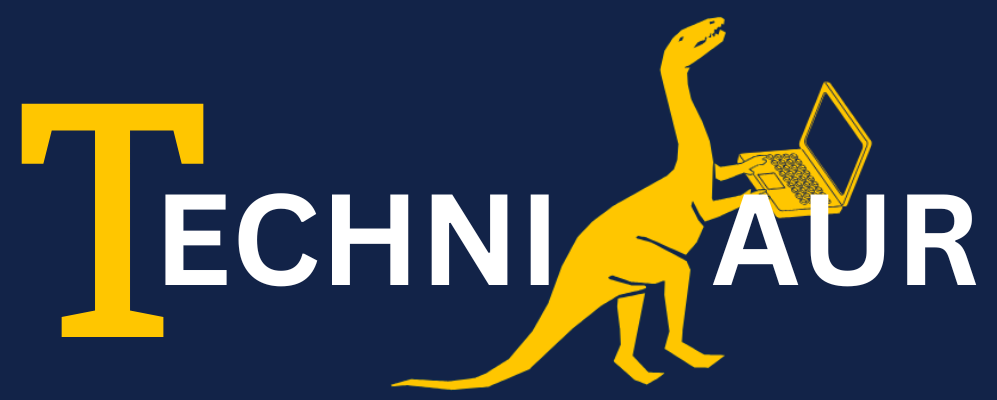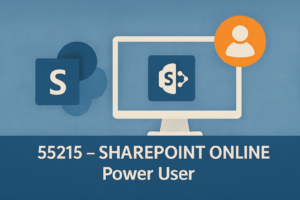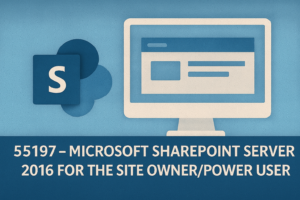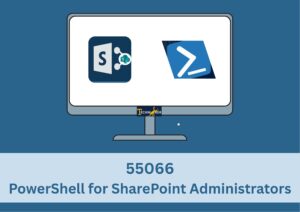Description
SharePoint Server SE for Power Users
SharePoint Server SE for Power Users This 4-day course provides a comprehensive, hands-on journey through the full site owner experience in SharePoint Server Subscription Edition (SE). Designed to build both confidence and competence, the course equips you with the knowledge to plan, create, and manage SharePoint sites effectively. You’ll learn how to leverage SharePoint Server SE’s features to support team collaboration and information sharing. The course combines best practices, practical guidance, and hands-on exercises to help you avoid common pitfalls and apply your learning in real-world scenarios.
Audience Profile
This course is ideal for a broad range of learners—from those with little to no prior experience with SharePoint Server SE to users who are already familiar with the platform and want to expand their skill set.
Prerequisites
Learning Outcomes
By the end of this course, participants will be able to:
-
Explain the key features and capabilities of SharePoint Server SE
-
Create and structure team sites, communication sites, hub sites, and a home site
-
Build rich, interactive web pages
-
Organize content using lists and libraries, utilizing features to support diverse use cases
-
Automate business processes and customize digital forms
-
Manage site security to ensure appropriate access and content protection
-
Use SharePoint Server SE’s advanced search tools to locate content efficiently
-
Implement policies for retention, records management, and content governance across multiple sites
Onsite Training
If you’re training a group of three or more, consider onsite delivery for maximum convenience. Onsite sessions reduce travel time and costs while providing training in a familiar setting. We can also tailor the course to address your specific business requirements.
Cancellation Policy
To cancel or, reschedule please contact us 10 days before the course
Contact Details
- 0410077106
- fusman@new.technisaur.com.au.au
- Melbourne VIC, Australia
Modules
Module 1: An Introduction to SharePoint
Let’s kick off with SharePoint Server SE by exploring its impressive range of features. You’ll discover how SharePoint Server SE is used to manage and share content, create engaging webpages, streamline business processes, and support smart decision-making with business intelligence tools.
We’ll also outline the typical users of SharePoint sites and discuss the responsibilities of the site collection administrator. Site Owners are granted functionality that, in other systems, would usually be reserved for developers. As a new Site Owner, you’ll be impressed by the possibilities SharePoint Server SE offers to end users.
Lessons
- What is SharePoint?
- Introducing SharePoint Server SE and SharePoint Online
- What is the cloud and what is on-premises?
- Ownership and access
Lab 1: Download content pack
- Download the course content pack
- Extract the ZIP file
After completing this module, students will be able to:
- Distinguish between SharePoint in the cloud and on-premises installations
- Describe SharePoint’s key features
- Outline the roles involved in managing SharePoint sites, from end user to administrator
- Identify who is best suited for the role of site owner
Module 2: Creating Sites
Whether you’re overseeing existing sites or starting from scratch, we’ll guide you through site hierarchy and planning. This understanding will help you assess existing sites and make informed decisions when creating new ones.
As a Site Owner, you’ll explore a variety of site templates and gain insight into their functions and best use cases. Once your site is built, you’ll customise its appearance—perhaps even branding it to match your organisation. You’ll also build navigation, an essential feature for helping users move through your site network.
Lessons
- Planning your sites
- Central administration
- Web addresses
- Site collections
- Create a new site and site templates
- Team site navigation
- The app bar
- User interface: classic vs modern
- Site contents: classic vs modern
- Where does classic come from?
- Create new subsites
- Site templates
- Apply a theme
- Building your navigation
- Hub sites
- Home sites
- Delete sites
Lab 1: Creating a new site
- Create a new team site
- Create a subsite
- Update the top link bar
- Customise the site theme
- Delete and restore a subsite
- Set up a hub site
- Link a site to a hub site
- Update the hub site navigation
After completing this module, students will be able to:
- Explain what a site collection is and how it manages multiple sites
- Understand the purpose of central administration
- Identify the different methods for creating sites
- Discuss the historical role of subsites
- Manage site navigation and appearance
- Implement hub sites as a modern approach
- Align top-level sites under a hub
- Describe the role of a home site in the app bar and mobile app
Module 3: Creating and Managing Web Pages
SharePoint offers a rich suite of tools for building webpages. You’ll learn how to update your site’s homepage with text, links, images, videos, and web parts. We’ll cover best practices for creating and linking multiple pages, ensuring your content is well-organised and engaging.
You’ll also learn about SharePoint Spaces—pages that support virtual reality. Additionally, SharePoint’s intranet capabilities and publishing features will be explored, including communication sites designed for sharing news and updates with broader audiences.
Lessons
- Introducing pages
- The types of pages in SharePoint
- Modern SharePoint pages
- Create news and site pages
- Sections
- Web parts
- Save, publish, share, and delete pages
- SharePoint Spaces
- Communication sites
- Classic SharePoint pages
- Using classic team site pages
- Features of classic publishing sites
Lab 1: Designing web pages
- Create a new news article
- Add sections and web parts
- Publish and share your news
- Create a communication site
- Add your communication site to a hub
After completing this module, students will be able to:
- Recognise the purpose of different modern SharePoint pages
- Explain the function of a communication site
- Use web parts to add dynamic content
- Distribute pages across your organisation
- Understand classic SharePoint page types
Module 4: SharePoint Lists and Apps
Apps help store and manage site information like events, contacts, and files. SharePoint offers various built-in apps, which can be tailored to meet specific needs. These include lists, libraries, and apps from the SharePoint Marketplace.
You’ll learn how lists structure calendars, contacts, and tasks, and understand the use of document libraries for storing and managing files. We’ll also introduce apps beyond Microsoft’s defaults, including on-premises and Marketplace options.
Lessons
- Introduction to apps
- Marketplace apps
- Adding apps to a site
- Creating and managing columns
- Public and personal views
- Managing app settings
- Content approval
- Major and minor versioning
- Document sets
- Working with files
- Create, upload, and edit files
- Co-authoring
- Check in/out
- Edit/view properties
- Grid view editing
- File commands
- Copy link and share
- Folders
- Recycle bin
- Alerts and rules
- OneDrive sync
- Working with classic lists
Lab 1: Designing lists and libraries
- Create a library
- Configure columns
- Add views
- Upload content
- Set up alerts
- Use version control
- Create a list
- Delete and restore an app
After completing this module, students will be able to:
- Decide when to use a list, library, or Marketplace app
- Configure metadata using columns
- Customise list views
- Explain advantages of views over folders
- Modify app settings to suit your data
- Use document sets to manage file groups
- Securely share information
- Recover deleted content
- Use OneDrive sync
- Recognise classic SharePoint list formats
Module 5: Building Processes with Workflows and Forms
SharePoint empowers you to automate business processes using workflows. These tools track items, route approvals, request feedback, or determine retention of content.
You’ll learn what workflows are, how to deploy them, and how to monitor workflow progress. We’ll also cover how to customise list forms to align with business logic and improve data collection.
Lessons
- What are business processes?
- Design and test out-of-the-box workflows
- Built-in workflows
- Third-party solutions
- Creating custom workflows
- Workflow settings
- Starting workflows
- Workflow use cases
- Customising list forms
- Editing columns
- JSON-based form edits
- Introduction to Power Automate
- Introduction to Power Apps
Lab 1: Building processes with workflows
- Enable workflows
- Create an approval workflow
- Test the workflow
- Customise list forms
After completing this module, students will be able to:
- Understand workflow and form customisation options
- Use built-in features to automate processes
- Test and manage workflows
- Remove outdated workflows
- Customise list forms using column editor and JSON
- Reset forms to default
- Understand Power Automate and Power Apps
Module 6: Customising Security
Security is essential for any site. This module covers best practices for managing user access and configuring permission levels tailored to user responsibilities.
You’ll learn to manage who can view, edit, or delete content, as well as how to share files securely and control access to specific parts of your site.
Lessons
- Managing SharePoint access
- Access requests
- Sharing permissions
- Sharing sites and files
- Removing users
- Creating permission levels and groups
- Inheritance
- Best practices
Lab 1: Customising security
- Share a file
- Create permission levels
- Create a security group
- Manage users
- Modify app and folder inheritance
After completing this module, students will be able to:
- Apply best practices for SharePoint security
- Add and remove users
- Create and assign custom permissions
- Manage inheritance settings
Module 7: Working in Search
With SharePoint’s large content capacity, effective search tools are vital. You’ll learn how to locate content quickly and how Site Owners can enhance search relevance for their organisation.
We’ll also demonstrate how to promote results based on keywords to improve visibility of key content.
Lessons
- Introduction to SharePoint search
- Searching within folders, libraries, lists, and sites
- Understanding search results
- Search tips
- Promoted results
Lab 1: Working with search
- Perform an app search
- Search a specific site and all sites
- (Optional) Create a promoted result
After completing this module, students will be able to:
- Explain content visibility in search results
- Use filters to refine search
- Conduct contextual searches
- Understand hub site roles in search
- Recognise how keywords are indexed
Module 8: Enterprise Content Management
Many teams use templates or manual steps for managing information. This module helps you automate document management using tools like content types, metadata, and retention policies.
You’ll also learn to use features like the Content Type Hub, in-place records management, and the Content Organiser for efficient document handling.
Lessons
- Managed metadata service
- Introduction to content types
- Creating and managing content types
- Deploying content types
- Using content types in apps
- Content Type Hub
- Information management policies
- Records centre
- In-place records management
- Content organiser
- Durable links
Lab 1: Enterprise content management
- Create site columns
- Create and deploy content types
- Set up in-place records management
After completing this module, students will be able to:
- Understand features for managing content across site collections
- Create and deploy content types
- Apply retention policies
- Use the Content Organiser to manage file movement
- Implement in-place records management
- Describe the function of a records centre





Reviews
There are no reviews yet.